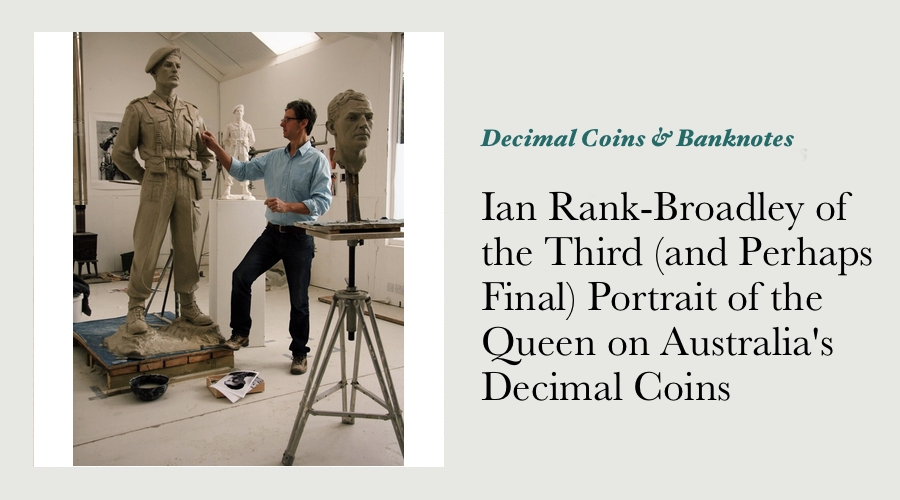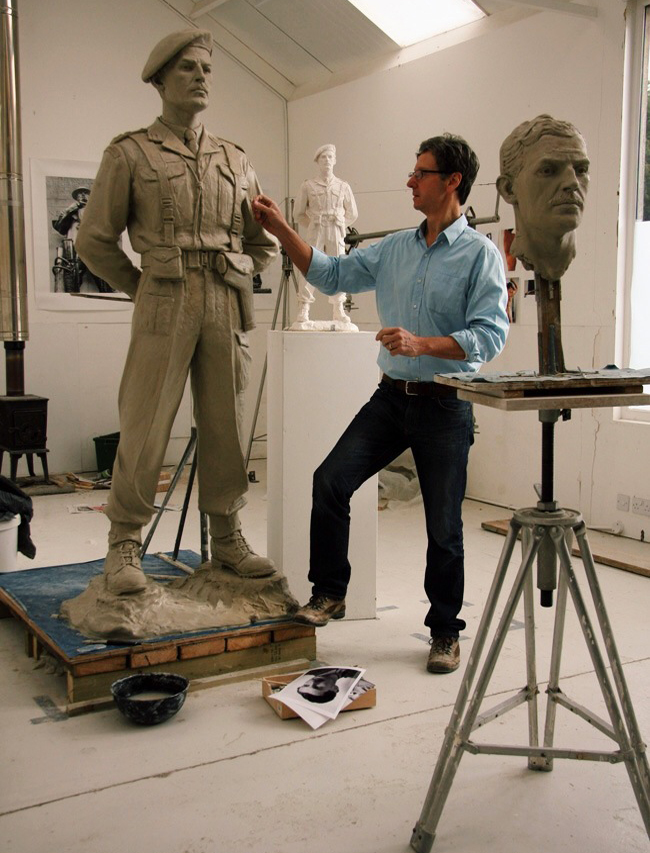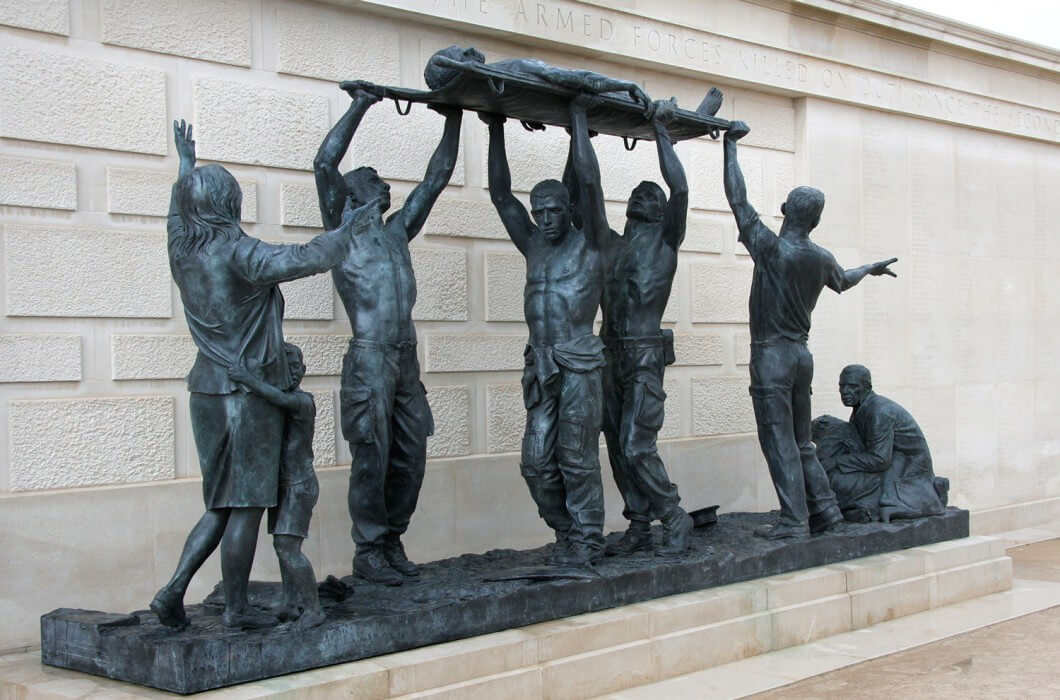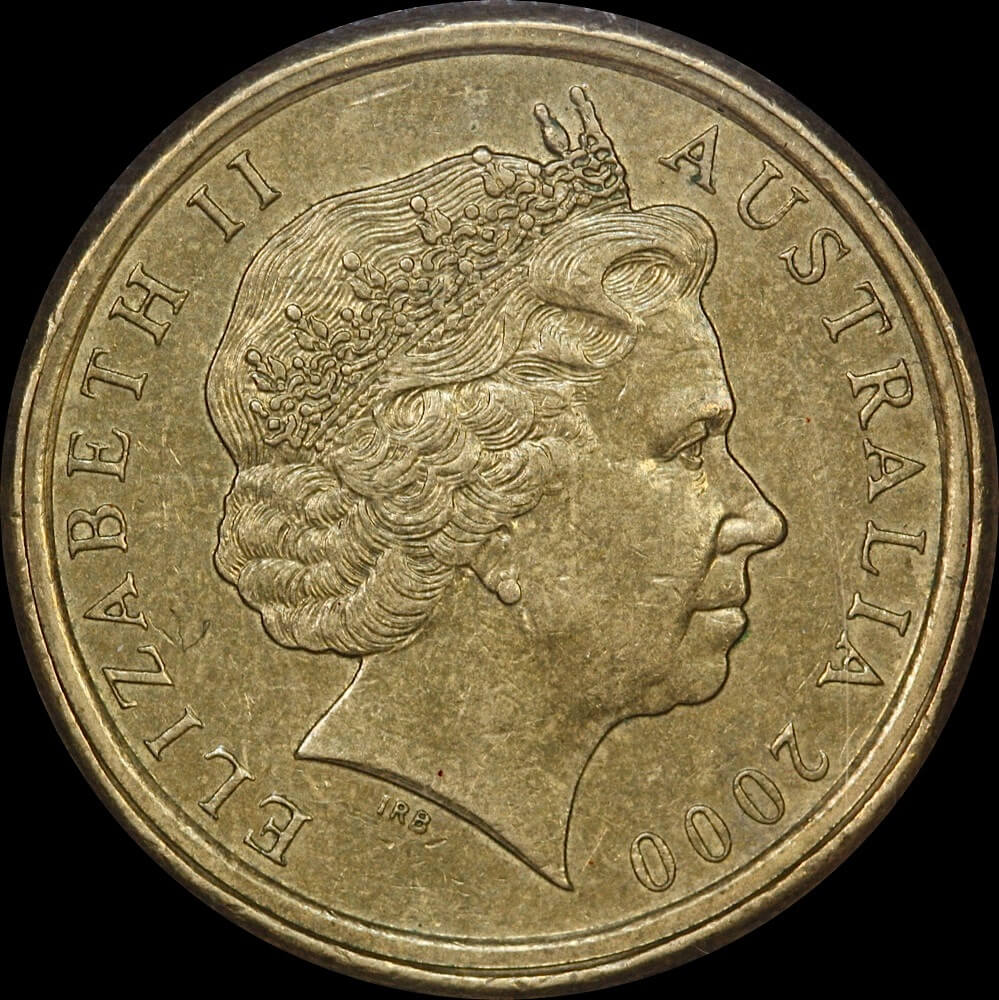Ian Rank-Broadley - Sculptor of the Third (and Perhaps Final) Portrait of the Queen on Australia's

Ian Rank-Broadley (IRB) is a renown British sculptor - perhaps his best-known work is the obverse coinage design that he designed of Queen Elizabeth II - it was used on Great Britain's coins between 1998 and 2014, and has been seen on Australia's coins since 1997.
IRB's works are in the permanent collections of the British Museum, London's National Portrait Gallery, the Ashmolean Museum, Fitzwilliam Museum Cambridge, St Paul's Cathedral, the Rijksmuseum, and several others. His work at the British National Armed Forces Memorial saw him receive the Marsh Award for Public Sculpture. As well as public sculptures, IRB has also generated a wide range of portraits, reliefs and medallions.
Few Australian coin collectors would be completely unaware of Ian Rank-Broadley's body of sculpting work aside from his obverse of the Queen, yet when we view his public sculptures, portraits and medallions, even the most focused collector will appreciate the talent that he has for capturing his subject matter in a unique and compelling way.
One of the Most Naturalistic Public Portraits of the Last 500 Years
One review of his portrait of Elizabeth II stated that Rank-Broadley’s obverse design was one of two portraits within the past 500 years to have truly captured their subject naturalistically: “...one, a woodcut of the Holy Roman Emperor Maximilian I dates from around 1519, and the second, the portrait head of Queen Elizabeth II of Britain , from the recent year of 1998. Portraying their subjects honestly, without any artistic embellishments, these portraits are both vehicles of propaganda, possibly made more impressive and authoritative on account of their blunt realism."
 The British general public was perhaps less enthusiastic about the realism evident in IRB’s portrait - there was a degree of shock that the Royal Mint and even the Queen herself had given the portrait approval.
The British general public was perhaps less enthusiastic about the realism evident in IRB’s portrait - there was a degree of shock that the Royal Mint and even the Queen herself had given the portrait approval.
One art reviewer at the time stated that in Rank-Broadley’s portrait of the Queen, “...the realism and almost-harsh detail of her face is surprising when compared with past renditions and modern conceptions of beauty; while most would agree that the Queen was once quite beautifully depicted on the past faces of British coins (see Figure 3), the modern likeness shares nothing of this standard conception. Perhaps it is the lack of standardized classical beauty, which has its origins in the Greco-Roman artistic tradition, that gives these two royal portraits their undeniable influence. Showing the rulers as they were seen in life, these representations of heads of state seem imperturbable and determined, an effect perhaps achieved by their realistic, untouched depictions that seem to give them power, thereby rendering them successful in their aims to create an unquestionable figure of authority."
At the time the portrait was launched in Britain in 1997, IRB himself stated that there was “...no need to disguise the maturity of the Queen’s years. There is no need to flatter her. She is a 70-year-old woman with poise and bearing."
There is no doubt at all that IRB’s portrait of depicts the Queen with poise and bearing, and although a revised portrait of Elizabeth II was introduced to the coins of Britain in 2015, there has been no official statement yet from the Royal Australian Mint that it will be seen on Australia’s coins also.
Is This the Last Portrait of Elizabeth II We’ll See on Australia’s Coins?
The announcement of Prince Phillip’s retirement from public duties in May of 2017 threw British media into a tailspin - it “...raced to the railings at Buckingham Palace as rumors of abdication, an imminent, or actual death swirled."
Media pundits at the time surmised that Prince Philip may have been encouraged to retire for reasons other than his age, that the whole exercise was in fact a "dry run" for a similar announcement on behalf of the Queen at some stage in the future.
Christopher Andersen, author of the best-selling royal biography "Game of Crowns” advised the Daily Beast that “The announcement of Philip’s retirement does foreshadow changes that are inevitable,” he says, “What we are witnessing are the first steps in the final stage of a plan that will culminate in the end of an era, and the beginning of a new and radically different reign. It is a process, carefully drawn up by the mysterious “Men in Grey” (that’s what Diana called them) who actually pull the strings at Buckingham Palace, and a series of events that I have been predicting for years.

Philip steps aside, the Queen begins curtailing her own royal duties, and when her husband dies Elizabeth II announces her own “retirement”, the word chosen to soften what will be her formal abdication."
Whether this means that the IRB portrait is the last we’ll see on Australia’s circulating coins is not yet clear, however the odds certainly are not dead against that happening.